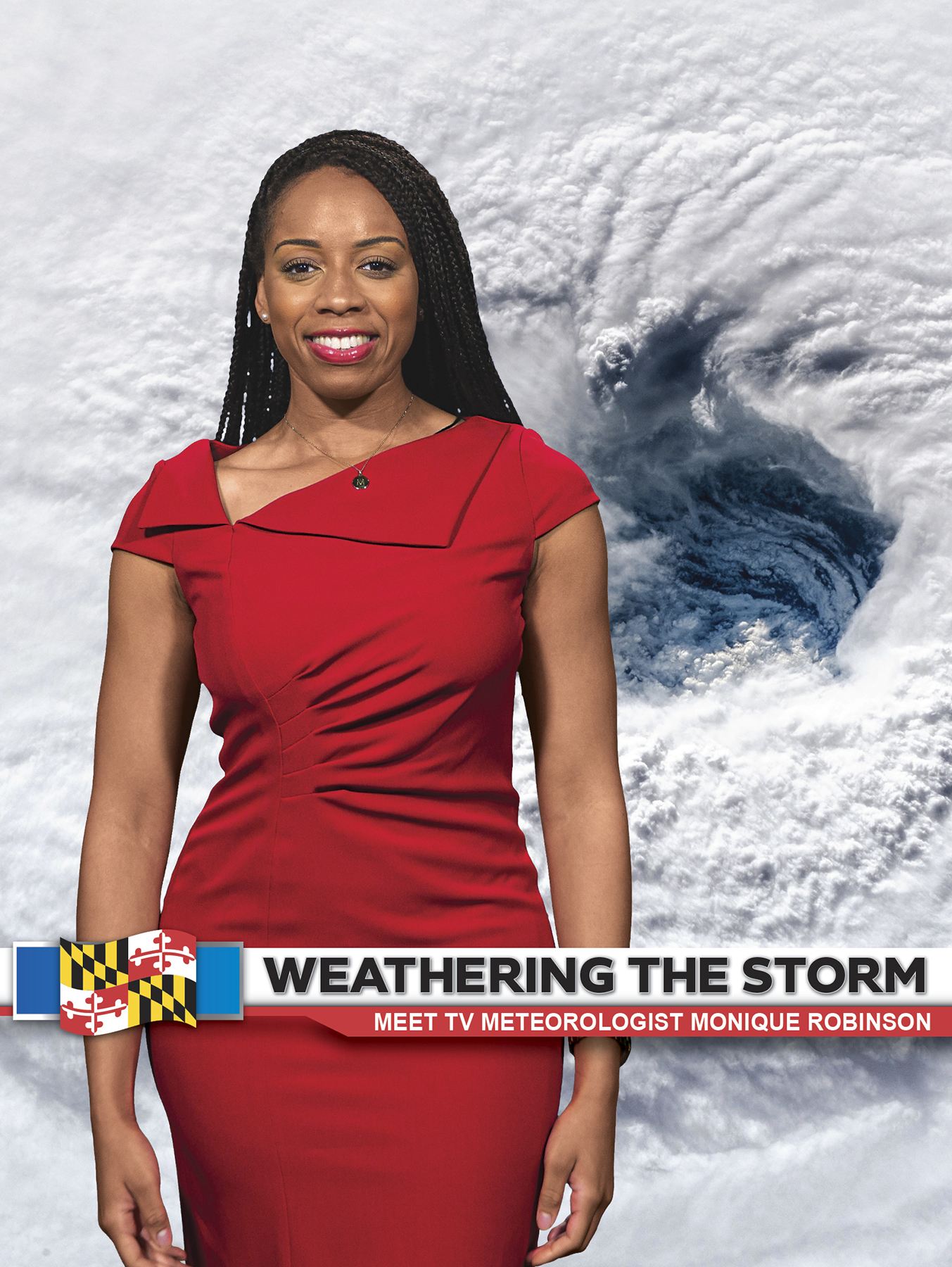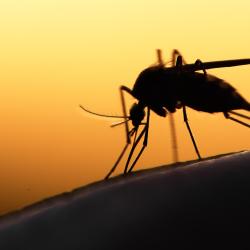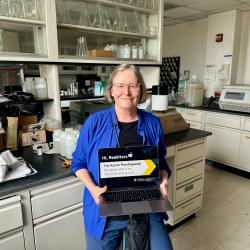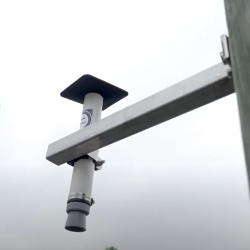Weathering the Storm
As Hurricane Florence neared the shoreline in Wilmington, North Carolina, Monique Robinson (B.A. '17, broadcast journalism; B.S. '18, atmospheric and oceanic science) sat on the floor in her apartment wondering how she ended up there.

Robinson had only been a broadcast meteorologist for two months when Hurricane Florence threatened to devastate the area in 2018. Days before the storm hit, her mother called, encouraging her to return home to Somerset, New Jersey, to get out of harm's way. Robinson admits she was scared.
But as she was packing, the gospel song "He Has His Hands on You" by Marvin Sapp began to play and she spontaneously fell to her knees. For her, it was a sign that God was going to protect her and everything was going to be okay.
"I'm so thankful that I made it through," Robinson said of that time. "If I decided to drive home to Jersey, it would have undermined all of the hard work that I did."
When Robinson arrived at the University of Maryland in fall 2013, she didn't envision herself becoming a broadcast meteorologist. She enrolled as a broadcast journalism major and knew she wanted to be on television, but she wasn't sure in what capacity. It wasn't until she took a weather and climate course taught by Atmospheric and Oceanic Science Assistant Professor Timothy Canty as an elective that she discovered her love for weather.
"Tim is a great teacher, and he was able to break down lightning and the thermodynamics of weather phenomena in a way that really intrigued me," Robinson said. "I was so fascinated by it and thought to myself, 'What if I join this major?'"
That semester, Robinson became the first person in the university's history to pursue degrees in both broadcast journalism and atmospheric and oceanic science.
"I grew up being a lover of science and math, and that's probably why, when I was doing just journalism, I didn't feel completely fulfilled by it," Robinson said. "Once I added my atmospheric and oceanic science major, I felt complete."
However, majoring in both subjects was no easy feat. "It was very complicated, because these majors did not overlap at all," she recalled. "I literally had to start from scratch in terms of requirements for my science degree. Journalism had more writing requirements, while atmospheric and oceanic science required me to take physics and math courses."
Balancing two different passions was challenging. People told her she wouldn't succeed. "I had someone tell me they saw no potential in me as a journalist, which really lit a fire under me, and that's when I started getting really serious about being a broadcast meteorologist," Robinson recalled. "At that same time, I had people saying to me, 'Why would you want to work so hard to obtain a science degree and pursue a career that doesn't put all of your science and math background to use?'"
Fortunately, Robinson received strong support and encouragement from the person who got her interested in weather in the first place—her advisor Timothy Canty.
"When I first told him that I wanted to be a broadcast meteorologist, he told me, 'I don't know anyone in this field but I'm going to email some people and help you out. I want you to be great,'" she recalled.
One thing Robinson knew she needed to be successful was experience working in front of a green screen—that green-colored backdrop news stations use to display digital weather maps and images behind the person on camera. There were no opportunities on campus for her to practice with a green screen, so she took matters into her own hands.
"I went to the fabric store and I picked up some green fabric, and I put it up in my kitchen and I just started practicing doing the weather in my apartment," she said.
When she showed Canty what she was doing, he told her that the department had a television monitor laying around that she could use. And it was with that green fabric and television monitor that she started the university's first broadcast meteorology club (called UMD Weather Talks), developed a reel to showcase her talents and landed her first post-graduation job in North Carolina.
"My news director found all of that stuff on YouTube and called and asked if I could move to Wilmington," she said.
Accepting that position launched Robinson's career. "Two months into me coming here to Wilmington, that's when Hurricane Florence came," she said. "We were the closest ABC station covering it, so friends and family and old acquaintances saw me broadcast on ABC affiliate channels across the nation covering a storm that was coming to this area."
Robinson's work covering Hurricane Florence and its aftermath earned her two Associated Press awards.
"I went from being in an apartment kitchen with crappy green fabric to someone announcing my name and being on television," she recalled holding back tears. "I look back and think, 'Wow, I've won two awards from this.' People who had evacuated to Canada emailed me and said, ‘I'm watching you right now because I'm worried about what's going on in my home. I'm just so thankful that you're there covering it and giving us a breakdown of exactly what's going on.'"
Knowing that she's able to help people experiencing fear and uncertainty makes her hard work as a broadcast meteorologist worthwhile.
"Stuff like that makes me feel like God said, 'Monique, this is why I wanted you to stay in Wilmington. This is why I sent you there,'" she said.
Written by Chelsea Torres
This article was published in the Summer 2020 issue of Odyssey magazine. To read other stories from that issue, please visit go.umd.edu/odyssey.







